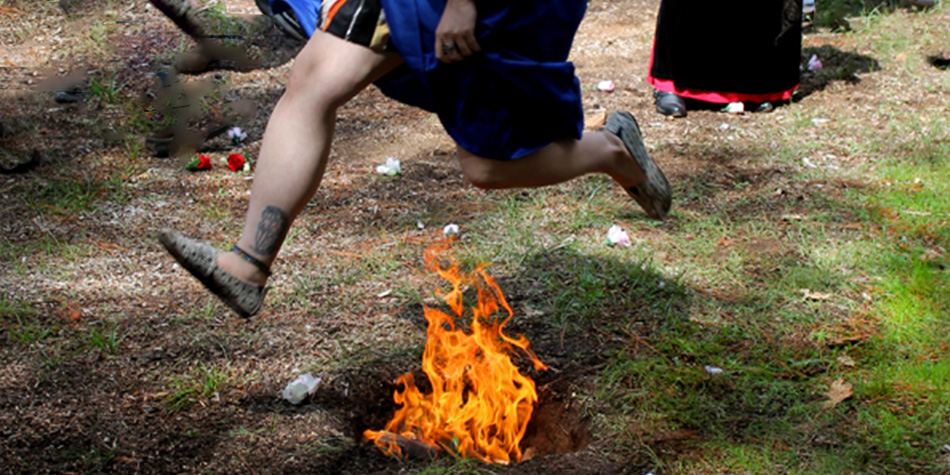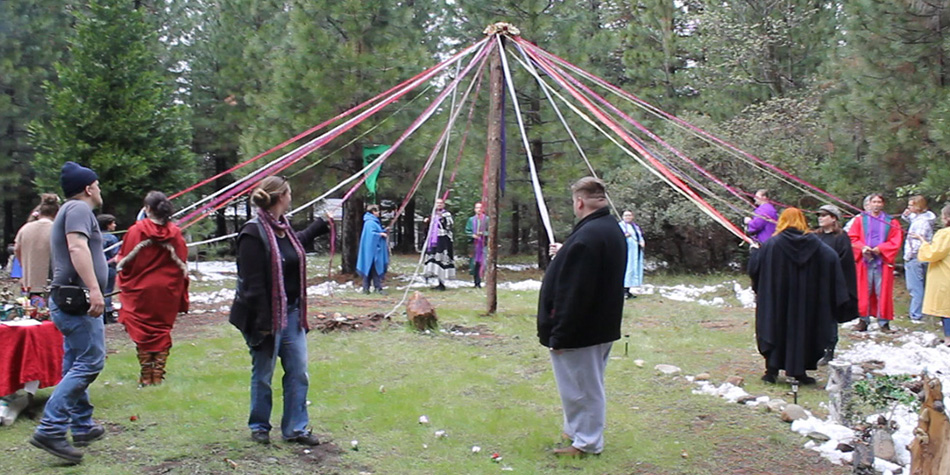
By Katrina Rasbold
As the wheel of the year turns and April fades into May, the vibrant festival of Beltane bursts forth in a blaze of fire, flowers, and fertility. Rooted in ancient Celtic tradition, Beltane has evolved through centuries, weaving together threads of mythology, seasonal change, and human connection. Today, it thrives as a modern spiritual and cultural celebration, honoring the earth’s abundance and the sacred dance between light and life.
The Ancient Roots of Beltane
Beltane, traditionally celebrated on the night of April 30th into May 1st, is one of the four major Gaelic seasonal festivals, alongside Samhain, Imbolc, and Lughnasadh. The name Beltane is believed to derive from the Celtic god Bel (or Belenus), a deity associated with light and healing, combined with the Gaelic word “teine” meaning “fire”—hence, “Bel’s Fire.”
In ancient Ireland and Scotland, Beltane marked the beginning of the pastoral summer. It was a crucial liminal festival, celebrating fertility, protection, and the return of vitality to the land. As a fire festival, bonfires were central to the rites, symbolizing purification, transformation, and the sun’s strengthening power. Cattle, vital to agrarian communities, were driven between two sacred fires to bless them with health and protection for the months ahead.
Key Elements of Ancient Beltane:
- Sacred Fires: Lit on hilltops, these fires honored the sun and were believed to ward off harmful spirits.
- Fertility Rites: Beltane was a celebration of life force and fecundity, often associated with symbolic—and sometimes literal—unions to ensure prosperity.
- May Boughs & Flowers: Homes and livestock were decorated with hawthorn, rowan, and spring blossoms to invite blessings.
- The Aos Sí: Offerings were made to the fae or spirits of nature, seeking goodwill as the veil between worlds thinned.
Unlike Samhain, which marked the descent into winter and communing with the dead, Beltane was a joyous counterpart—celebrating life, sensuality, and the full bloom of nature.
Beltane in Decline: Suppression and Survival
With the rise of Christianity across Celtic lands, many pagan festivals were either suppressed or absorbed into church-sanctioned holidays. Beltane, with its overt themes of fertility, sensuality, and reverence for nature spirits, faced particular disapproval.
By the 18th and 19th centuries, many of the older Beltane customs had faded, especially in urban areas. However, rural communities in parts of Scotland and Ireland quietly maintained fragments of tradition—such as Maypole dancing, flower garlands, and protective rituals for livestock.
The Revival: Beltane in Modern Paganism
The 20th century saw a resurgence of interest in pre-Christian spiritual practices. With the emergence of Wicca, Druidry, and other forms of modern Paganism, Beltane was revived as a key festival on the Wheel of the Year—the eightfold seasonal calendar adopted by many contemporary practitioners.
Modern Beltane honors both historical customs and reimagined rituals, often focusing on themes of:
- Fertility and Creativity
- Union of Divine Masculine and Feminine Energies (often symbolized by the Green Man and the May Queen)
- Passion, Growth, and Vitality
- Honoring Nature Spirits and the Land
Modern Practices of Beltane
Today, Beltane is celebrated worldwide by Pagans, Wiccans, Druids, and those drawn to earth-based spirituality. Even outside spiritual circles, echoes of Beltane remain in May Day festivities across Europe.
Common Modern Beltane Traditions:
🔥 Beltane Fires
Continuing the ancient custom, bonfires remain central. In some gatherings, participants leap over small fires or candles to invite blessings, passion, or purification. The famous Beltane Fire Festival in Edinburgh is a spectacular modern interpretation, blending performance art with ancient symbolism.
🌸 Maypole Dancing
Though more commonly associated with secular May Day traditions, the Maypole has deep-rooted Beltane significance. The pole, often viewed as a phallic symbol, is encircled by dancers weaving ribbons in patterns that represent unity, fertility, and community harmony.
👑 The May Queen and Green Man
Many modern rituals include the crowning of a May Queen, representing the goddess of spring and life, and her consort, the Green Man, a symbol of nature’s wild, untamed force. Their symbolic union reflects the sacred marriage (hieros gamos) of earth and sky, ensuring the fertility of the land.
🌿 Flower Crowns and Greenery
Participants often adorn themselves with flower crowns, ivy, or hawthorn blossoms. Altars are decorated with symbols of fertility—flowers, antlers, seeds, honey, and chalices.
✨ Handfastings and Romantic Rites
Given Beltane’s strong association with love and union, it’s a popular time for handfasting ceremonies—a traditional form of betrothal or marriage within Pagan communities.
🧚 Honoring the Fae
Many practitioners leave offerings of milk, honey, or bread to honor the faeries and spirits of nature, recognizing the thinning veil between the human world and the mystical.
Beltane in the Modern World: A Personal and Communal Celebration
In today’s fast-paced, digital world, Beltane serves as a powerful reminder to reconnect—with nature, with community, and with the cycles of life. Whether through grand gatherings or solitary observances, modern Beltane invites participants to:
- Celebrate passion and creativity in all forms.
- Honor the balance of energies—embracing both light and shadow, masculine and feminine, action and receptivity.
- Reconnect with the land, recognizing the sacred in blooming flowers, warm winds, and lengthening days.
- Embrace joy and sensuality, allowing space for playfulness, dance, music, and heartfelt connection.
For many, Beltane is less about strict historical reenactment and more about capturing the spirit of renewal, vitality, and sacred connection that this ancient festival embodies.
Keep Those Fires Burning, Folks!
Beltane, with its roots in ancient Celtic tradition and its blossoming in modern spiritual practice, is a living testament to humanity’s enduring relationship with nature’s cycles. As bonfires are lit and Maypoles raised, the essence of Beltane continues to inspire—calling us to celebrate life in all its vibrant, untamed glory.
Whether you’re dancing under the stars, crafting a flower crown, or simply lighting a candle in quiet reflection, Beltane invites you to honor the fire within and the blooming world around you.
Green Egg Magazine Wishes You a Blessed Beltane!
Want to join the conversation about this blog post? Go to the Green Egg Forum and scroll for the forum post that relates to this article: https://www.facebook.com/groups/1069823176940972
 Katrina Rasbold is a professional Witch, published author, priestess, and editor of Green Egg Magazine. She and her husband, Eric, are the creators of the CUSP spiritual path and owners of Crossroads Occult. You can reach her through www.katrinarasbold.com.
Katrina Rasbold is a professional Witch, published author, priestess, and editor of Green Egg Magazine. She and her husband, Eric, are the creators of the CUSP spiritual path and owners of Crossroads Occult. You can reach her through www.katrinarasbold.com.
